Being home to ancient civilizations and early humans has made Iran an eligible country for many historical and natural attractions designated by UNESCO as World Heritage Sites. The long-held history in Iran has resulted in a plethora of cultural, historical and natural places, which represent and manifest the thousands-year culture and history in this ancient country. Having 26 World Heritage Sites- 24 historical attractions and 2 natural attractions-, Iran is considered as one of the ten countries, which house the most World Heritage Sites of UNESCO. These UNESCO sites are of paramount importance in terms of unique features they possess; consequently, they are designated by UNESCO as World Heritage Sites so that they receive greater protection and maintenance by all UNESCO member states, not just the host country. UNSCO World Heritage Convention started working in 1972 with the aim of boosting international cooperation in preserving cultural, historical and natural places of unique importance. Iran joined this convention and managed to inscribe 26 sites since then. To be inscribed in UNESCO list, sites need to meet specific criteria like being an unparalleled creativity of our ancestors, an outstanding example of architecture and some other criteria. In this blog, we have a short introduction of World Heritage Sites in Iran, which are definitely worth visiting at least once. We, Persian Trips, are here to help you experience a memorable travel to this wonderful country.

1. Tchogha Zanbil
Tchogha Zanbil is the first designated World Heritage Site in 1979., located in Khuzestan Province in the southern region of Iran. Literally meaning “basket mound”, Tchogha Zanbil is a remnant of Elamite era in Iran; Being a prominent example of stepped pyramidal monument, this historical site was constructed at the order of an Elamite king in order to honor one of the great gods of the Elamites who was the god of the law and the underworld and also the protector of Susa.
2. Persepolis
Persepolis is the second World Heritage Site in Fars Province designated by UNESCO on the same year as Tchogha Zanbil. This unique heritage is significant in both historical and architectural aspects. As the ceremonial capital of the world-known Achaemenid empire in Persia, this unparalleled complex would astonish every visitor annually with the unique man-made architecture that was once one of the most flourishing places in the world.

3. Naqshe- Jahan Square
Naqshe- Jahan Square or Shah Square in Isfahan is a historical attraction belonging to Safavid era, a flourishing and critical era in both history and architecture. Being the second largest square in the world after Tiananmen Square in Beijing is just one of the distinguishing features of this historical site. This World Heritage Site, registered in 1979 as the third UNSECO Site in Iran, is large enough to incorporate within itself four other historical attractions with unique architecture and valuable history.

4. Takht-e Soleyman, the fourth
Takht-e Soleyman, the fourth World Heritage Site, was inscribed on the UNESCO list in 2003, after a 24-year gap with the previous UNESCO Site in Iran. Takht-e Soleyman, located in West Azerbaijan, is a significant archeological site belonging to the Sassanid era. What makes this historical site stand out is its function as the most important fire temple, Azar Goshnasb Fire Temple, in Sassanid era. Not just a historical attraction, Takht-e Solyman is built in close proximity with a mysterious lake.

5. Bam Citadel (Arg-e Bam) is another
Bam Citadel (Arg-e Bam) is another World Heritage Site located in Kerman Registered in 2004, Arg-e Bam is recognized as the largest adobe structure in the world that was large fortress with many parts like residential and royal sections. This historical fortress experienced much prosperity due to being located on the world-known silk road. Unfortunately, the citadel was almost destroyed following the severe earthquake in 2003; however, Cultural Heritage Organization restored most parts of this citadel.

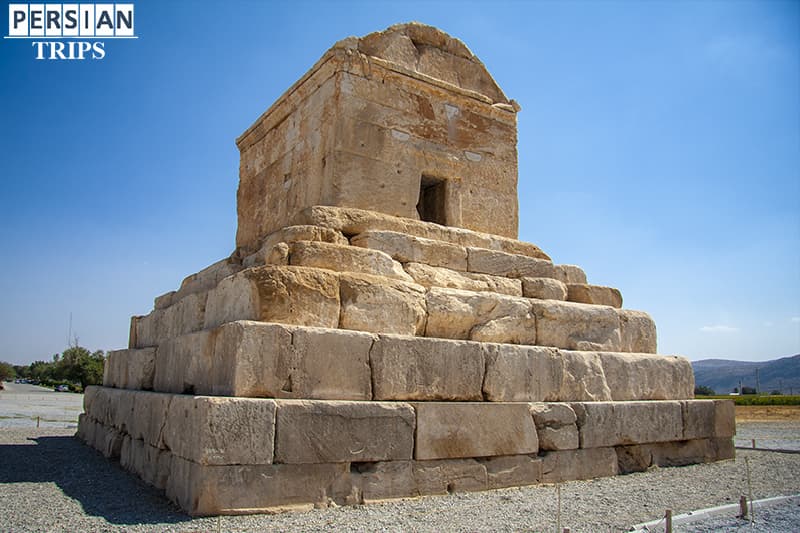
6. Pasargadae
Pasargadae, located in Fars Province, was designated as the World Heritage Site in 2004. This archaeological site, which once the capital of the Achaemenid dynasty, was built at the command of Cyrus the Great who was the founder of the Achaemenid dynasty. Cyrus, a revered historical figure in Iran for his remarkable achievements, not only established this important site, but also is considered to have been buried in Pasargadae; his tomb in Pasargadae is visited by many Iranians and tourists annually.
7. Gonbad-e Soltaniyeh ( Soltaniyeh Dome )
Gonbad-e Soltaniyeh (Soltaniyeh Dome) in Zanjan Province was inscribed by UNESCO as a World Heritage Site in 2005. This 49-meter building is said to be the mausoleum of the Mongol king in Ilkhani era. Having one of the oldest double-shell domes, this historical attraction has one of the largest brick domes not only Iran, but in the World; it actually is referred to as the third largest dome after Florence Cathedral and Hagia Sophia. This fascinating structure has been a pioneer for later architectural buildings.


8. Bistun Inscription
Bistun Inscription, registered in 2006, is a large rock relief dating back to Achaemenid era. Located in Kermanshah, Bistun Inscription can be considered as one of the largest wall newspapers in the world to announce the most important political achievement in Persia to all passers-by. Having managed to conquer all the conspirators and protestors, Darius the great demonstrate his success in unifying the Persian Empire after the decease of the former king in this unique rock relief.
9. Armenian Monastic Ensembles of Iran
Armenian Monastic Ensembles of Iran, located in both West Azerbaijan and East Azerbaijan, consist of three Armenian churches in Iran including Saint Thaddaeus Monastery, Saint Stepanos Monastery and Dzordzor Chapel. These three churches were designated as World Heritage Sites in 2008 due to representing Armenian architecture and culture. These historical Armenian churches are signs of deep-rooted coexistence of different religions in Iran; Armenians mostly inhabited the northern regions of Iran before immigrating to central regions of Iran because of Ottomans’ invasion.

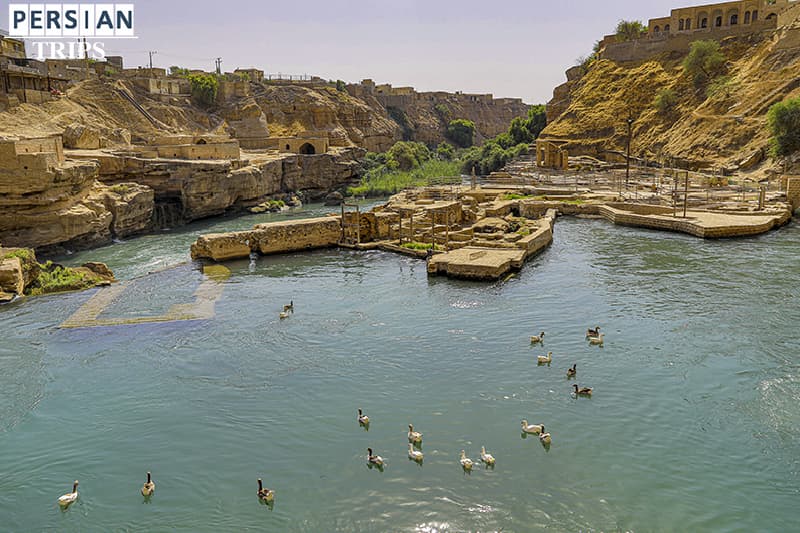
10. Shushtar Historical Hydraulic System was
Shushtar Historical Hydraulic System was registered as the World Heritage Site in 2009 for representing the engineering ingenuity in pre-industrial age. This multi-functional irrigation complex is composed of various structures like water mills, dams, bridges, tunnels and canals that all worked together. As a masterpiece of civil engineering, this complex benefits from the mastery of knowledgeable experts in canal irrigation.
11. Tabriz Historic Bazaar Complex
Tabriz Historic Bazaar Complex, which is recognized as the largest covered bazaar in the world, was registered as a UNESCO World Heritage Site in 2010 for its unique architecture and its long-held history. Also known as one of the oldest bazaars in the Middle East, Tabriz Bazaar has long been a prosperous commercial center due to being located on the silk road. Besides being an important economic center, Tabriz Bazaar has witnessed critical political events in the past.


12. Sheikh Safi al-Din Khanegah and Shrine Ensemble is a mausoleum in Ardabil province designated
Sheikh Safi al-Din Khanegah and Shrine Ensemble is a mausoleum in Ardabil province designated as a World Heritage Site in This mausoleum is believed to be the burial place of the spiritual leader of Sufism in Iran and the ancestor of Safavid kings. This beautiful complex is composed of several parts including Chini Khaneh with eye-catching architecture in which many China dishes, offered to Safavid kings by the China Emperor, was kept.
13. Lut Desert (Dasht-e Lut) is the first natural spot of Iran designated
Lut Desert (Dasht-e Lut) is the first natural spot of Iran designated as a World Heritage Site. Registered on the UNESCO list in 2016 is surrounded by three provinces in Iran including Kerman, Sistan Baluchestan and Southern Khorasan. This salt desert, a barren land devoid of vegetation, is told to hold the record for having the hottest temperature on the Earth surface; in addition, Lut Desert is home to sand dunes and Shahdad Kaluts, which are some eye-catching geological landforms.


14. The Persian Garden
The Persian Garden is an earthly garden, built mostly in hot and desert areas of Iran. The first prototype of Persian Garden dates back to the Achaemenid dynasty with the construction of Pasargadae Garden by the decree of Cyrus the Great. Nine Persian gardens, including Eram, Chehel Sotun, Fin, Abas Abad, Shazdeh Mahan, Dolat Abad, Pahlavan Pour and Akbarieh, were inscribed as World Heritage Sites in 2011. In Persian Gardens, we can see an exquisite landscape with architectural symmetry.
15. Gonbad-e Qabus
is a cylindrical tomb tower, which was built during the reign of the Ziyarid ruler. According to an inscription on the tower, this tomb tower was built at the decree of Qabus. Being the largest brick tower in the world, Gonbad-e Qabus was designated as a World Heritage Site n 2012 for its unique architecture. In this tall tomb tower, high-quality baked brick is used, which represents the architectural style called “Razi” in Iran.
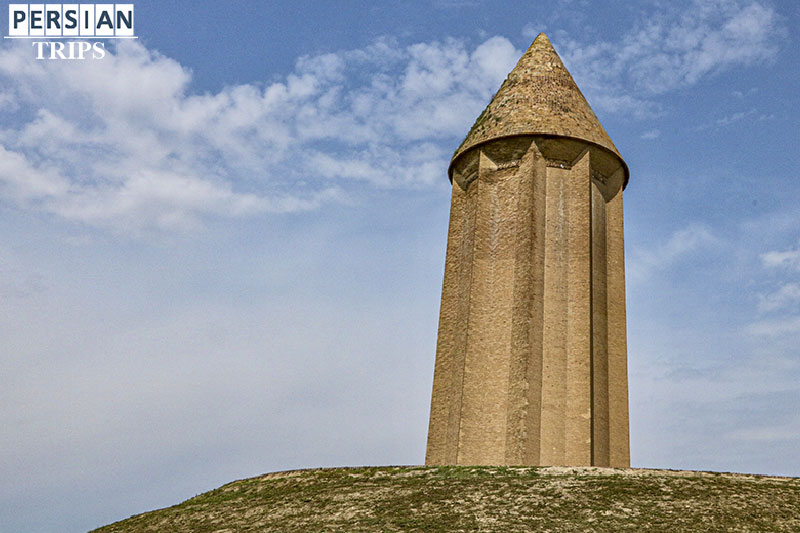

16. Masjid-e Jameh of Isfahan
Masjid-e Jameh of Isfahan or Atiq Mosque was also registered as the UNESCO World Heritage Site in 2012, in the same year as Gonbad-e Qabus. This historical monument, which dates back to Sassanid era, is considered as an outstanding museum in which the evolution of Iranian architecture can be traced and studied as this mosque was built during different Pre-Islamic and Islamic periods. Having prominent parts like Oljaitu Altar makes this masterpiece a valuable monument for the study of architectural course in Iran.

17. Golestan Palace
Golestan Palace, which is the only World Heritage Site in the capital of Iran Tehran, was inscribed by UNESCO in 2013. This historical monument was the royal complex belonging to Qajar era. Having eye-catching decorations like fabulous tiling makes this unique complex an ideal place for taking photos. Besides its beautiful decorations and architecture, Golestan Palace houses various brilliant parts including Shams Ol-Emareh, which is the first tallest building in Tehran and the second tallest one in Iran after Aali Qapu Palace in Isfahan.
18. Shahr-e Sukhteh
Shahr-e Sukhteh is a valuable historical city that was inscribed by UNESCO in 2014. The discovery of Shahr-e Sukhteh has contributed a lot in tracing the brilliant history of Iran. In contrast to the name attributed to this historical site” Shahr-e Sukhte” or “Burnt City”, fire did not contribute to the degeneration of the city. Most archeologists bring two reasons for the decline of the city: the city came to destruction either because of the invader’s attack or the diversion of the Helmand River. The discovery of this ancient city confirms the long-held history and civilization of Iran.

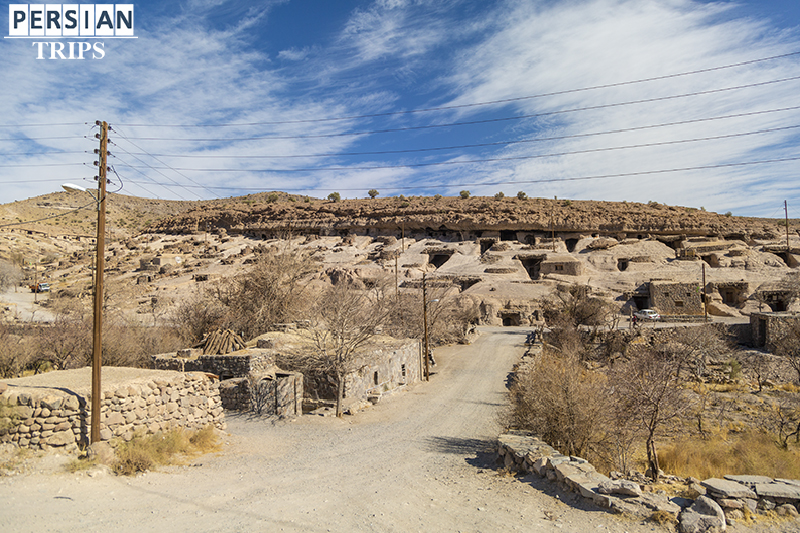
19. Meymand
Meymand is a unique rocky village in Kerman Province, which has been regarded as a UNESCO World Heritage Site since 2015. What distinguish this rocky village are hand-dug houses that are estimated to date back to about 3000 years ago. Having such a long-held history verifies that Meymand rocky village has been one of the early human settlements in Iran. An outstanding feature of this hand-dug village is that its architecture is in unanimous harmony with the surrounding nature, without any trace of destroying the nature.
20. Susa
Susa ancient site, located in Khuzestan Province, was inscribed as a UNESCO World Heritage Site in 2015. Susa historical site includes different parts such as Apadana Palace (similar to Apadana Palace in Persepolis), Hadish, Acropole, Shush Castle, Susa Jameh Mosque and some other places. The first excavations, which were conducted in Qajar era, revealed that this historical site was once the capital of Elam with their long-held civilization and also the winter capital of the Achaemenids.


21. Persian Qanat
Persian Qanat, one of the creative innovations of Iranians, was fortunately designated as a UNESCO World Heritage Site in 2016. This unique irrigation system is an underground aqueduct that allows water to be transported from the depth of the ground to the surface without water evaporation on the way in mostly dry and hot climate. This underground water was used for multi-functional purposes like irrigating farms and drinking. Eleven Persian Qanats including Qasabeh Qanat in Gonabad were inscribed by UNESCO.
22. Historic City of Yazd
Historic City of Yazd was designated by UNESCO as a World Heritage Site in 2017 due to its unique Iranian architecture. Known as the city of windcatchers, Yazd is considered as the first adobe city and the second oldest town in the world. What makes Yazd unique is the preservation of its historical region. In addition, Yazd has long been known for its outstanding architectural features such as qanats, windcatchers and adobe houses.


23. Sassanid Archeological Landscape in Fars Province
Sassanid Archeological Landscape in Fars Province is a UNESCO World Heritage Site including eight archeological sites belonging to Sassanid era. This historical site is composed of Bishapour, Sarvestan and Firouz Abad located in Fars Province. This historical site, which is mostly in ruins today, represent the political, cultural, artistic and historical outlook of Sassanid era. This archeological site also includes important historical attractions belonging to Sassanid era including Bas Relief, Ardeshir Palace, the city of Goor, and Qal-e Dokhtar.
24. Hyrcanian Forests
Hyrcanian Forests, which mostly cover the northern region of Iran on the southern shores of the Caspian Sea, were designated as the second Natural World Heritage Site of Iran by UNESCO in 2019. Hyrcanian Forests are considered as the mother of European forests due to their longevity; these ever-green forests are home to broad-leave trees that were long extinct in Europe due the Ice Age while these broad-leave trees managed to survive in Iran because of the Caspian Sea which acted like a natural barrier against the freezing condition of the Ice Age.
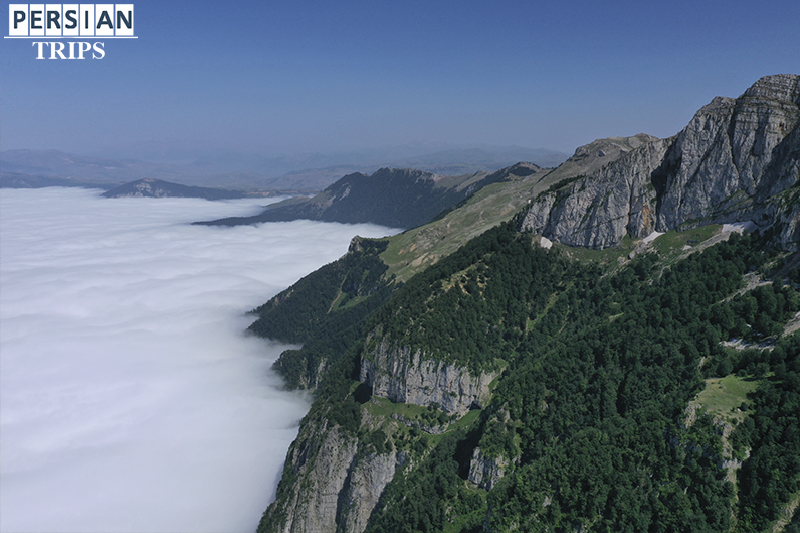

25. Cultural Landscape of Uramanat, located
Cultural Landscape of Uramanat, located in the heart of Zagros Mountains in Kermanshah and Kurdistan Provinces, was designated as a UNESCO World Heritage Site in 2012. This mountainous area has a stepped architecture that is in complete harmony with the surrounding nature. Similar to other stepped villages like Masuleh, houses are situated on a steep slope, with the roof of each house being the courtyard of another house. This kind of architecture protected the houses and inhabitants from natural disasters like flood.
26. Trans-Iranian Railway
Trans-Iranian Railway, which was inscribed by UNESCO as a World Heritage Site in 2021, was constructed in 1927 in Pahlavi era by the decree of Reza Shah. This railway is the fourth and the longest railway registered in the world by UNESCO. Besides having high quality and good technique in building this railway, it is of importance in tourism industry as it connects the Caspian Sea in the north of Iran to the Persian Gulf in the south. This north-south railway passes though picturesque landscapes and natural attractions in Iran.












